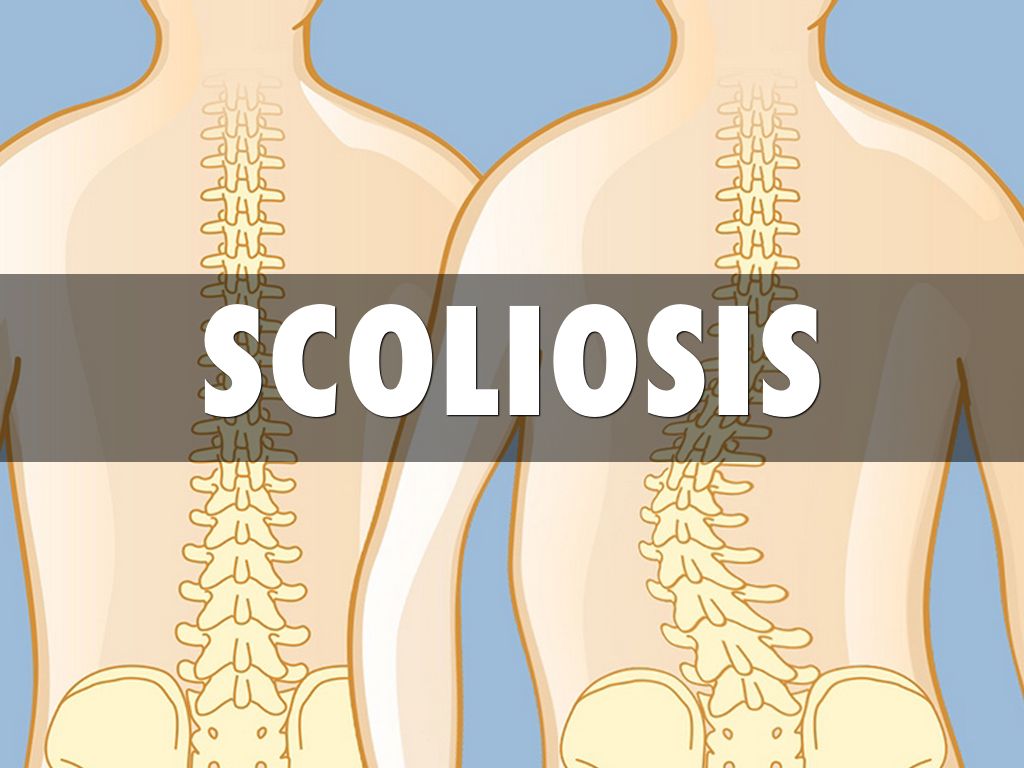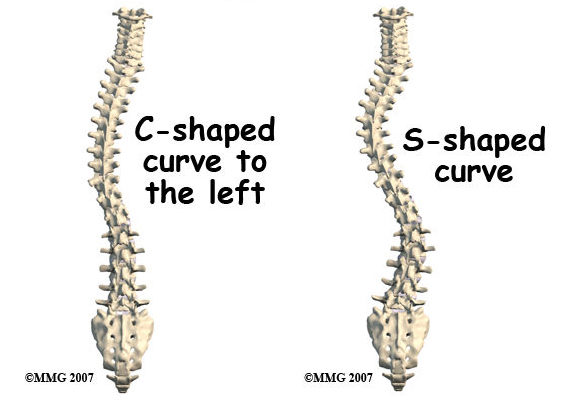Scoliosis is a medical condition characterized by an abnormal curvature of the spine. It affects millions of people worldwide, causing physical discomfort and limitations in daily life. For individuals with severe scoliosis, the impact can be even more significant, leading to difficulties in performing routine tasks and maintaining gainful employment. In such cases, disability benefits can provide much-needed financial support and assistance. This article aims to explore the eligibility criteria for disability benefits based on scoliosis severity, the assessment process, and tips for applying for these benefits.

Understanding Scoliosis
Scoliosis is a condition that causes the spine to curve sideways, forming an “S” or “C” shape. It can occur at any age, but it is most commonly diagnosed during adolescence. While the exact cause of scoliosis is often unknown, it can be attributed to factors such as genetics, muscle imbalances, or neuromuscular conditions. The severity of scoliosis can vary, ranging from mild to severe, and it can have a significant impact on an individual’s daily life.

Types and Causes of Scoliosis
There are several types of scoliosis, including idiopathic scoliosis, congenital scoliosis, and neuromuscular scoliosis. Idiopathic scoliosis is the most common type and typically develops during adolescence. Congenital scoliosis is present at birth and is caused by abnormal spinal development. Neuromuscular scoliosis is associated with underlying conditions such as cerebral palsy or muscular dystrophy. Understanding the type and cause of scoliosis is crucial in assessing its severity and determining eligibility for disability benefits.

Impact of Scoliosis on Daily Life
Scoliosis can have a significant impact on an individual’s daily life. The abnormal curvature of the spine can cause pain, discomfort, and limited mobility. Simple tasks such as sitting, standing, or walking may become challenging, leading to decreased productivity and quality of life. Individuals with severe scoliosis may experience difficulty in performing physical activities, participating in sports, or even maintaining a job. The physical limitations imposed by scoliosis can result in the need for disability benefits to ensure financial stability and access to necessary medical care.
Disability Benefits for Scoliosis
Disability benefits are designed to provide financial support to individuals who are unable to work due to a disabling condition. In the case of scoliosis, individuals with severe curvature and functional limitations may be eligible for these benefits. The two main programs that provide disability benefits in the United States are Social Security Disability Insurance (SSDI) and Supplemental Security Income (SSI). Both programs have specific eligibility criteria that must be met to qualify for benefits.
Eligibility Criteria for Disability Benefits
To be eligible for disability benefits based on scoliosis, individuals must meet certain criteria established by the Social Security Administration (SSA). The SSA evaluates disability claims using a five-step sequential evaluation process. The criteria for eligibility include:
- Meeting the definition of disability: The SSA defines disability as the inability to engage in substantial gainful activity (SGA) due to a medically determinable impairment that is expected to last for at least 12 months or result in death.
- Meeting the severity requirement: The severity of scoliosis must be significant enough to interfere with an individual’s ability to perform basic work-related activities.
- Meeting the duration requirement: The impairment caused by scoliosis must be expected to last for at least 12 months or result in death.
- Meeting the SGA requirement: The individual must not be engaged in substantial gainful activity, which is defined as earning a certain amount of income per month.
- Meeting the medical listing criteria: The SSA has specific medical listing criteria for scoliosis, which outline the severity and functional limitations required to meet the eligibility requirements.
Assessing Scoliosis Severity
Assessing the severity of scoliosis is crucial in determining eligibility for disability benefits. The severity is typically measured by the degree of curvature in the spine, as determined by X-rays and other diagnostic tests. The Cobb angle is commonly used to measure the curvature, with a higher angle indicating a more severe case of scoliosis. In general, a Cobb angle of 40 degrees or more is considered severe and may meet the medical listing criteria for disability benefits.
Medical Documentation and Diagnosis
To support a disability claim based on scoliosis, individuals must provide comprehensive medical documentation and diagnosis. This includes X-rays, medical reports, and other relevant medical records that demonstrate the severity of the condition and its impact on daily life. It is essential to work closely with healthcare professionals to ensure accurate and thorough documentation of the scoliosis diagnosis and its functional limitations.
Functional Limitations and Scoliosis Disability
Functional limitations refer to the restrictions or difficulties an individual experiences in performing daily activities. In the case of scoliosis, functional limitations may include difficulty standing or sitting for extended periods, limited range of motion, pain, and decreased stamina. These limitations can significantly impact an individual’s ability to work and perform job-related tasks. Providing detailed information about these functional limitations is crucial in establishing eligibility for disability benefits.
Social Security Administration’s Evaluation Process
The Social Security Administration evaluates disability claims based on the severity of the impairment and its impact on an individual’s ability to work. The evaluation process involves reviewing medical evidence, functional limitations, and the individual’s work history. The SSA considers both the medical listing criteria for scoliosis and the individual’s residual functional capacity (RFC) to determine eligibility for disability benefits. The RFC assessment evaluates an individual’s ability to perform work-related activities despite the limitations caused by scoliosis.
Tips for Applying for Disability Benefits
Applying for disability benefits can be a complex and lengthy process. To increase the chances of a successful claim, consider the following tips:
- Seek medical treatment: Regular medical treatment and documentation are essential in establishing the severity of scoliosis and its impact on daily life.
- Gather comprehensive medical records: Collect all relevant medical records, including X-rays, diagnostic tests, and reports, to support your disability claim.
- Consult with a disability attorney: Working with a disability attorney who specializes in scoliosis cases can provide valuable guidance and increase the chances of a successful claim.
- Provide detailed information: Clearly describe the functional limitations caused by scoliosis and how they affect your ability to work and perform daily activities.
- Follow the SSA’s guidelines: Familiarize yourself with the SSA’s eligibility criteria and guidelines to ensure that your application meets the necessary requirements.
Conclusion
Scoliosis can have a significant impact on an individual’s daily life, making it difficult to work and perform routine tasks. For individuals with severe scoliosis, disability benefits can provide much-needed financial support and assistance. Understanding the eligibility criteria, assessing scoliosis severity, and providing comprehensive medical documentation are crucial steps in applying for disability benefits. By following the tips outlined in this article, individuals with scoliosis can navigate the application process more effectively and increase their chances of receiving the support they need.
References
- Weinstein SL, Dolan LA, Cheng JC, et al. “Adolescent idiopathic scoliosis.” Lancet. 2008;371(9623):1527-1537. doi: 10.1016/S0140-6736(08)60658-3.
- Negrini S, Donzelli S, Aulisa AG, et al. “2016 SOSORT guidelines: Orthopaedic and rehabilitation treatment of idiopathic scoliosis during growth.” Scoliosis and Spinal Disorders. 2018;13:3. doi: 10.1186/s13013-018-0175-8.
- Trobisch P, Suess O, Schwab F. “Idiopathic scoliosis.” Dtsch Arztebl Int. 2010;107(49):875-883. doi: 10.3238/arztebl.2010.0875.
- Hresko MT. “Clinical practice. Idiopathic scoliosis in adolescents.” N Engl J Med. 2013;368(9):834-841. doi: 10.1056/NEJMcp1209063.
- Bettany-Saltikov J, Weiss HR, Chockalingam N, et al. “Surgical versus non-surgical interventions in people with adolescent idiopathic scoliosis.” Cochrane Database Syst Rev. 2015;2015(4). doi: 10.1002/14651858.CD010663.pub2.
- Social Security Administration. “Disability Benefits.” https://www.ssa.gov/benefits/disability/.

